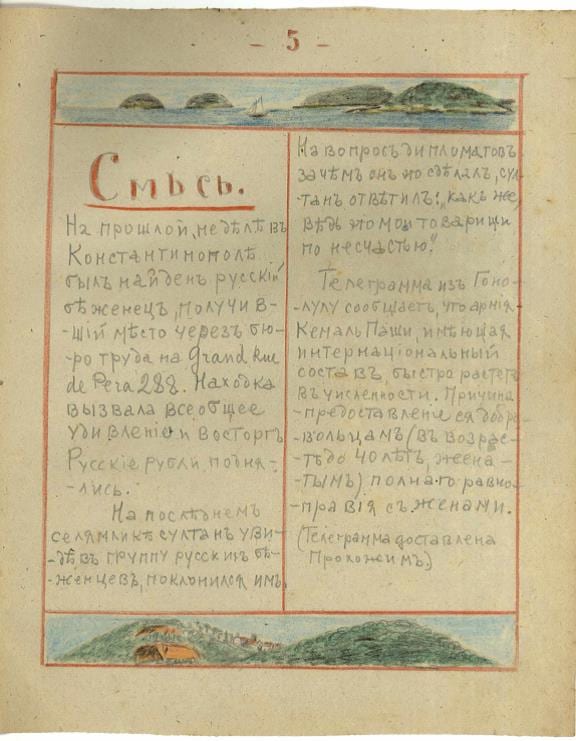Many days in the Life of Nicholas Hans – translating and cataloguing Russian magazines
By utnvkh2, on 31 August 2017
It might be a repeat from my last post but I don’t think I can emphasise enough how much added value our volunteers bring to our archive collections and how much we enjoy having them working with us. We have been very lucky to have a volunteer, Sara Abou El Ella, working on a catalogue enhancement project with the Nicholas Hans Papers at UCL Institute of Education Archives. The Nicholas Hans Papers have been catalogued since 1999 but there were two boxes of additional papers that had been added at a later date. These boxes included correspondence, photographs, postcards and some very special magazines written in Russian by Nicholas Hans. I catalogued what I could and with some help from one of our researchers was able to write a brief overview for the Russian magazines but could not describe the content of them. Luckily for us, and future researchers, Sara is fluent in Russian! Sara has written up her experience of translating and cataloguing these magazines.

Front page of the first issue, NH/10/8/1 ©UCL IOE Archives
Many days in the Life of Nicholas Hans
post written by Sara Abou El Ella
This title is very similar to a famous Russian author Aleksandr Solzhenitsyn A day in the life of Ivan Denisovich. For me my Wednesdays were absorbed in the reading of Nicholas Hans magazines.
I started cataloguing a small part of the Nicholas Hans Collection in the Institute of Education at UCL. As a volunteer my task consisted in reading and then summarising the contents of five magazines written and hand drawn by Nicholas Hans ‘in 1920 while interned on the island of Principo in 1920 with other refugees leaving from Russia’ (quote from a note written by Grace Hans & included with the magazines).

NH/10/8/3 ©UCL IOE Archives
All his magazines follow the same structure. Nicholas Hans rarely included articles or pieces from other authors. Hans hand-drew every single issue focusing on the front and back covers as well as adding decorations and other drawings inside the magazines. The issues would start with a letter from the editorial staff followed by a brief introduction of the issue’s topic. The main article would follow the topic of the introduction and discuss it in depth. In the final pages of the issue Hans would draw and write rebuses and charades. Moreover, in a couple of issues he also included fairy-tales or poems, for example: Cinderella.
Typically, I would start my work on the collection by reading the different articles and simultaneously translate and summarise them. Each section was divided according to its title. One of the biggest challenges was to decipher Nicholas Hans’ handwriting. Besides, the magazines required careful handling since they are very fragile. In some cases they were stained and the colours of the drawing faded, but it was still possible to discern both the words and the drawings.
It was extremely fascinating to be able to handle and work on such a fine archival specimen. I believe I was particularly stricken by the profound longing that Hans had for his country. This feeling was partially suppressed by the awareness that it was impossible for him to go back to Russia. In my opinion the ability to transpose these feeling through satirical articles and aggravating drawings was very enriching and interesting to analyse.
- NH/10/8/4 ©UCL IOE Archives
- NH/10/8/3 ©UCL IOE Archives
The catalogue records for these magazines are now online and there is more information about the collection on our libguide.
 Close
Close




